Sweden Top Green Buildings
Sweden is renowned for its commitment to sustainability and its leadership in green building design. With a focus on sustainable architecture and eco-friendly buildings, Sweden has established itself as a global frontrunner in the field.
According to the U.S. Green Building Council (USGBC), Sweden ranked fifth in the world for LEED-certified projects in 2022. With 152 certified projects, covering over 2.27 million gross square metres of space, Sweden leads Europe in green building initiatives.
Key Takeaways:
- Sweden ranks fifth globally for LEED-certified projects.
- The country prioritises sustainable architecture and eco-friendly buildings.
- Sweden’s commitment to green building has positioned it as a leader in the field.
- The U.S. Green Building Council recognises Sweden’s efforts in sustainable construction.
- Sweden’s green buildings contribute to a more eco-friendly future.
The Importance of Green Buildings
Green buildings play a crucial role in sustainable development. They utilize energy-efficient construction methods, incorporate green building materials, and prioritize eco-conscious design. By embracing these principles, green buildings help reduce environmental impact, improve energy efficiency, and create healthier indoor environments. In Sweden, the focus on sustainable architecture and eco-conscious design has led to the development of innovative green building examples that showcase the country’s commitment to sustainability.
One of the key features of green buildings is their energy-efficient construction. This involves using techniques and materials that minimize energy consumption, such as effective insulation and advanced HVAC systems. Green buildings can significantly reduce the reliance on non-renewable energy sources, resulting in lower greenhouse gas emissions and a smaller carbon footprint.
Another important aspect of green buildings is the incorporation of green building materials. These materials are environmentally friendly and sustainable throughout their lifecycle, from production to disposal. Examples of green building materials include recycled steel, sustainably sourced timber, and low VOC (volatile organic compounds) paints. By choosing these materials, green buildings contribute to the conservation of natural resources and the reduction of waste.
Eco-conscious architecture is a fundamental principle in green building design. It focuses on creating buildings that harmonize with nature, enhance occupants’ well-being, and minimize environmental impact. Eco-conscious design considers factors such as natural lighting, ventilation, and the use of renewable energy sources to create comfortable and sustainable living and working spaces.
The commitment to energy-efficient construction, green building materials, and eco-conscious architecture in Sweden has resulted in the development of innovative green building examples. These projects serve as inspiration and showcase the possibilities of sustainable development. From residential buildings to commercial complexes, Sweden is at the forefront of green building design and construction.
Throughout the country, green buildings are transforming the landscape and contributing to a more sustainable future. They are not only reducing energy consumption and minimizing environmental impact but also improving the quality of life for occupants. With their innovative design and eco-friendly features, green buildings in Sweden are setting a new standard for sustainable architecture.
| Benefits | Description |
|---|---|
| Reduced energy consumption | Green buildings use energy-efficient construction methods and technologies, resulting in lower energy bills and reduced reliance on non-renewable energy sources. |
| Lower environmental impact | Through the use of green building materials and sustainable design principles, green buildings minimize resource consumption, waste generation, and greenhouse gas emissions. |
| Healthier indoor environments | Green buildings prioritize indoor air quality, natural lighting, and ventilation, creating healthier and more comfortable living and working spaces for occupants. |
| Enhanced occupant well-being | Eco-conscious architecture and design promote a connection with nature and can have positive effects on occupants’ mental and physical health. |
| Sustainable urban development | Green buildings contribute to creating sustainable cities and communities by reducing the environmental impact of urban areas and supporting long-term environmental stewardship. |
LEED Certification in Sweden
Sweden has achieved a high number of LEED-certified projects, showcasing its commitment to sustainable development. LEED certification recognizes buildings that meet strict criteria for energy efficiency, water conservation, indoor air quality, and sustainable materials. Sweden’s focus on sustainable development has positioned it as a leader in building design and construction that prioritizes environmental responsibility and human health.

LEED (Leadership in Energy and Environmental Design) is a globally recognized green building rating system. It promotes the design, construction, operation, and maintenance of buildings that are environmentally responsible and resource-efficient. Achieving LEED certification in Sweden requires meeting rigorous standards, ensuring that buildings are not only energy-efficient but also contribute to a healthier and more sustainable built environment.
LEED-certified projects in Sweden demonstrate the country’s dedication to sustainable development and environmental stewardship. By prioritizing energy efficiency, water conservation, and the use of sustainable materials, these buildings contribute to Sweden’s low carbon footprint and help create a more sustainable future.
Benefits of LEED Certification
LEED-certified projects offer a range of benefits, both for building owners and occupants, as well as for the environment. Some key advantages include:
- Reduced energy consumption and lower operating costs
- Improved indoor air quality and occupant comfort
- Efficient use of water resources and reduced water consumption
- Enhanced waste management and recycling practices
- Promotion of sustainable materials and construction practices
LEED certification not only demonstrates a commitment to sustainability but also provides a competitive edge in the real estate market. LEED-certified buildings are highly sought after by tenants and investors who prioritize environmental responsibility and want to be associated with green, healthy, and efficient spaces.
LEED-Certified Projects in Sweden
| Project Name | Location | LEED Certification Level |
|---|---|---|
| Green Tower | Stockholm | LEED Platinum |
| EcoTech House | Malmo | LEED Gold |
| Sustainable Office Park | Gothenburg | LEED Silver |
| Green Hospital | Uppsala | LEED Certified |
These LEED-certified projects in Sweden represent a diverse range of building types, including residential, commercial, and institutional. Each project showcases innovative design, construction techniques, and sustainable features that contribute to Sweden’s sustainable development goals.
“LEED certification is a testament to Sweden’s commitment to sustainability and its proactive approach to environmentally conscious building practices.” – Anna Svensson, Sustainable Building Consultant
LEED certification in Sweden plays a crucial role in promoting sustainable development and reducing the environmental impact of the built environment. By incorporating energy-efficient technologies, sustainable materials, and innovative design strategies, LEED-certified buildings contribute to a greener and more resilient future for Sweden.
The Sara Cultural Centre
The Sara Cultural Centre in Skellefteå, Sweden, is a noteworthy example of sustainable architecture. This 75-meter-high wooden tower is one of the tallest in the world and showcases the use of timber in construction. Wooden buildings like the Sara Cultural Centre sequester carbon dioxide from the atmosphere and have a lower environmental impact compared to traditional cement constructions. The centre’s design incorporates highly efficient solar panels, further reducing its environmental footprint.
Wood has long been recognized as a green building material due to its renewable nature and ability to store carbon. The Sara Cultural Centre effectively demonstrates the beauty and functionality of timber in sustainable architecture. By using wood as the primary construction material, the building reduces its carbon footprint and contributes to a more eco-friendly built environment.
The Sara Cultural Centre highlights the potential of sustainable architecture to achieve both aesthetic appeal and environmental responsibility. Its innovative design showcases how renewable materials, such as wood, can be utilized to create buildings that are both visually stunning and environmentally conscious.
In addition to its use of timber, the Sara Cultural Centre incorporates highly efficient solar panels. These panels harness the power of the sun to generate clean and renewable energy, reducing the building’s reliance on traditional energy sources. By integrating solar panels into the design, the centre exemplifies the importance of incorporating renewable energy solutions in sustainable architecture.
The Sara Cultural Centre stands as a testament to Sweden’s commitment to sustainable development and eco-conscious design. It serves as an inspiration for architects and designers around the world, demonstrating that green building examples in Sweden are setting the standard for sustainable architecture.
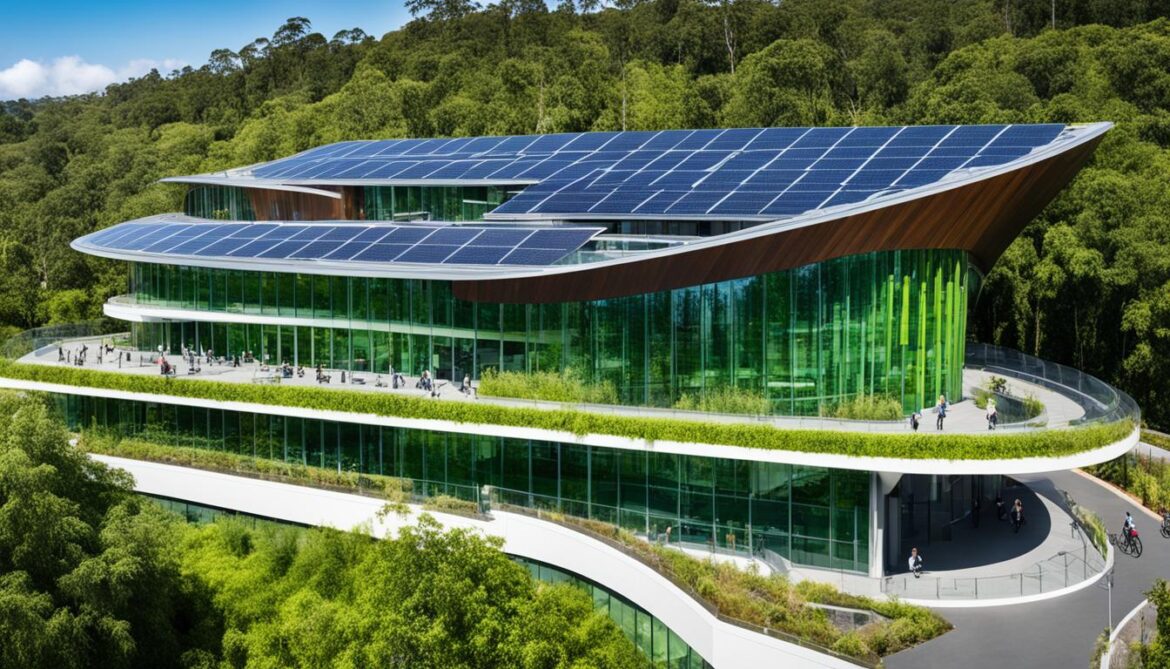
CityGate Tower in Gothenburg
In the sustainable development landscape of Gothenburg, Sweden, the CityGate tower stands as a monumental testament to eco-conscious architecture. As the Nordic region’s tallest office building, it not only boasts impressive heights but also embodies sustainable building practices. Designed to leave a minimal carbon footprint, this awe-inspiring structure is expected to achieve the highest LEED certification, reaffirming Sweden’s commitment to sustainable architecture and eco-friendly buildings.
One of the noteworthy sustainable features of the CityGate tower is its use of recycled aluminum, which contributes to reducing environmental impact. By incorporating recycled materials into the construction process, the tower demonstrates a commitment to resource conservation and waste reduction. In addition, the building implements a high-tech solution to tackle the carbon emissions associated with concrete production, further emphasizing its eco-conscious design.
Not stopping there, the CityGate tower pushes the boundaries of sustainability by relying entirely on renewable solar energy for its power supply. By harnessing the abundant sunlight available in Gothenburg, the tower showcases the potential of clean energy sources and aims to be a beacon of sustainable development in the city.
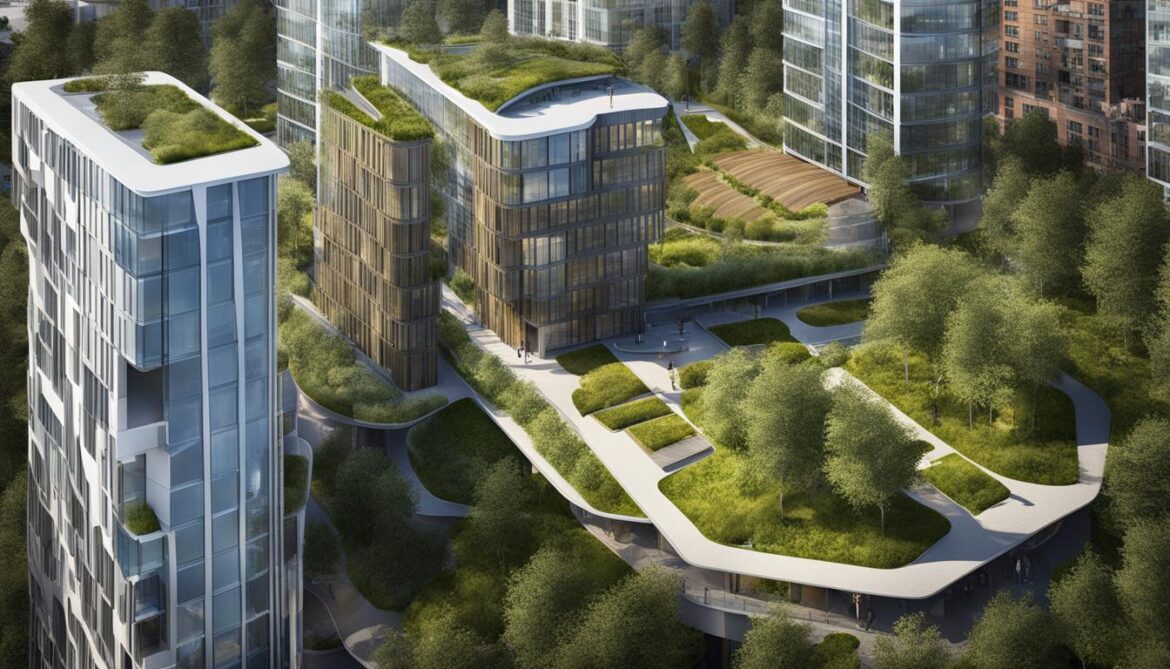
With its impressive stature and unwavering commitment to sustainability, the CityGate tower in Gothenburg sets a new standard for eco-friendly buildings in Sweden. It stands as a symbol of progress, innovation, and environmental responsibility, fueling the vision of a greener future.
Prefabricated Construction in Sweden
Sweden has a long and impressive history of pioneering prefabricated construction, making it a leader in sustainable architecture and green building designs. Up to 80% of the country’s housing stock has been built using this innovative construction method, known for its numerous advantages.
- Faster and Efficient: Prefabricated construction allows for faster and more efficient building processes compared to traditional on-site construction. The use of standardized modules, manufactured off-site, reduces construction time and accelerates project completion.
- Reduced Waste Generation: Prefabrication minimizes waste generation by optimizing the use of materials. In a controlled factory environment, excess materials can be recycled or reused in future projects, contributing to a more sustainable construction industry.
- High-Quality Construction: Prefabricated buildings are constructed under stringent quality control measures in factory environments. This ensures consistent quality and precision in design and construction, resulting in durable and long-lasting structures.
“Sweden’s reliance on prefabricated construction has been instrumental in achieving its goals of sustainable development. This construction technique not only offers significant time and cost savings, but also aligns with the country’s commitment to eco-friendly buildings and design.”
The use of prefabrication in green building designs helps reduce the environmental impact of the construction industry. By minimizing waste, saving energy, and ensuring high-quality construction, Sweden continues to set an example for sustainable architecture and construction practices.
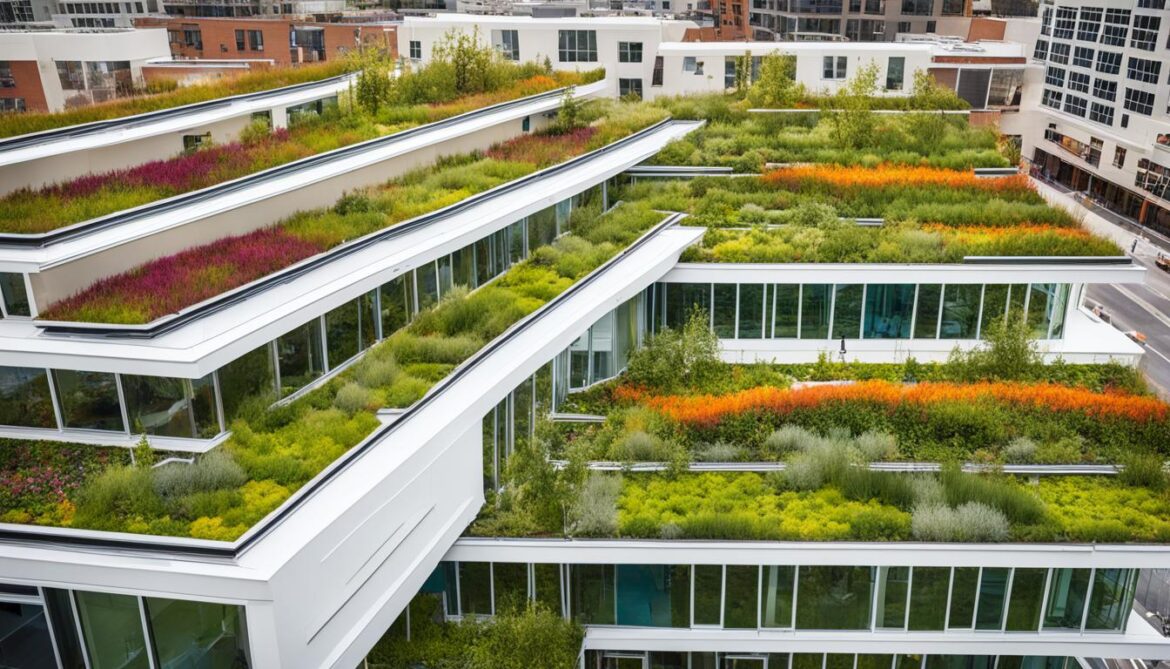
Comparison between Prefabricated Construction and Traditional Construction Methods
| Prefabricated Construction | Traditional Construction | |
|---|---|---|
| Construction Time | Shorter construction time due to pre-manufactured components | Longer construction time as components are built on-site |
| Waste Generation | Reduced waste generation as materials are pre-measured and optimized | Higher waste generation due to on-site cutting and measuring |
| Quality Control | Strict quality control measures in factory environments | Quality control challenges due to variations in on-site construction conditions |
| Sustainability | Minimizes environmental impact through reduced waste and optimized material usage | Higher environmental impact due to excessive material waste |
The comparison highlights the key advantages of prefabricated construction, demonstrating its significant contribution to sustainable architecture and Sweden’s leadership in eco-friendly building designs.
Digital Construction Tools in Gothenburg
Gothenburg, known for its commitment to sustainable development, has embraced digital construction tools to enhance the construction industry’s eco-conscious architecture Sweden. The CityGate tower project, a prime example of sustainable development, harnessed the power of digital tools like Bluebeam to facilitate seamless communication and coordination among teams.
Digital construction tools bring numerous benefits to the table. They streamline workflows, reduce paper usage, and improve efficiency, ultimately contributing to sustainable development in Sweden. With the adoption of these tools, Gothenburg reaffirms its dedication to environmentally friendly practices and innovation in the construction industry.
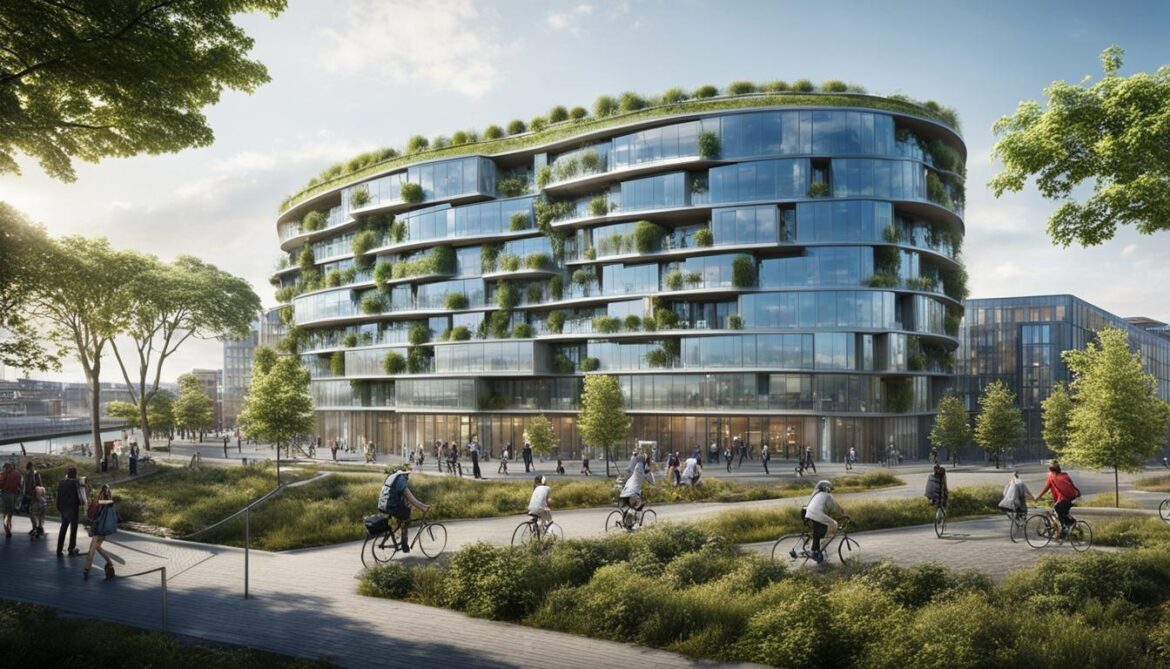
By utilizing digital tools such as Bluebeam, teams working on the CityGate tower project in Gothenburg were able to communicate and coordinate more effectively, leading to enhanced efficiency and reduced resource waste. These tools enable seamless collaboration, real-time updates, and efficient document management, significantly improving the construction process. The digitization of construction processes aligns with the eco-conscious architecture Sweden’s commitment to sustainable development by minimizing environmental impact and optimizing resource utilization.
The Benefits of Digital Construction Tools
Digital construction tools offer several advantages that contribute to sustainable development in Sweden. Here are some key benefits:
- Streamlined Workflows: These tools automate manual processes and facilitate seamless collaboration, saving time and resources.
- Reduced Paper Usage: By digitizing documents and communication, digital tools help reduce paper waste, supporting sustainable practices.
- Enhanced Efficiency: Real-time updates, instant communication, and automated processes improve overall project efficiency.
- Integrated Data Management: Digital tools centralize project data, making it easily accessible, searchable, and manageable for all stakeholders.
- Improved Accuracy: Digital tools minimize human error through automated calculations, measurements, and data validation.
“Digital construction tools have revolutionized the way we design, plan, and build. They have not only improved efficiency but also aligned with our sustainability goals, allowing us to create eco-friendly buildings that contribute to sustainable development in Sweden.”
– Project Manager, CityGate Tower Gothenburg
Gothenburg’s Holistic Approach to Development
Gothenburg, a city in Sweden, is taking a comprehensive and sustainable approach to its development strategy. The city aims to strike a balance between economic growth, livability, and environmental responsibility. By adopting this holistic mindset, Gothenburg is paving the way for a thriving and eco-conscious future.
The development strategy of Gothenburg focuses on densifying key inner-city areas. This approach helps preserve the local feel of the city while reducing commute times for its residents. By prioritizing the use of sustainable building materials and investing in infrastructure, Gothenburg is actively creating a more environmentally friendly and sustainable urban environment.
One of the key priorities in Gothenburg’s development strategy is the use of green building materials. These materials not only contribute to the reduction of carbon emissions but also enhance the overall sustainability of construction projects. By incorporating renewable and environmentally friendly materials in building designs, Gothenburg ensures that its development efforts align with sustainable development principles.
This holistic approach to development in Gothenburg demonstrates the city’s commitment to preserving its unique character, improving quality of life, and minimizing its environmental impact. By striking a balance between economic growth and sustainability, Gothenburg sets an example for other cities to follow in their pursuit of sustainable development.
Key Points:
- Gothenburg’s development strategy takes a holistic approach to sustainable development, balancing economic growth, livability, and environmental responsibility.
- The strategy emphasizes the densification of key inner-city areas to preserve the local feel and reduce commute times.
- Gothenburg invests in infrastructure and utilizes sustainable building materials to create an eco-conscious city.
- The holistic approach ensures the city’s unique character is preserved while promoting sustainable and environmentally friendly development.

Image: A visual representation of sustainable development in Gothenburg.
Green Buildings and Urban Sustainability
Green buildings play a crucial role in urban sustainability. As urban areas consume a significant amount of energy and produce greenhouse gas emissions, it is essential to implement sustainable building practices to reduce their environmental footprint and combat climate change. Sweden, known for its commitment to sustainable development, exemplifies this through its focus on green buildings and eco-friendly construction.
By incorporating energy-efficient systems, green building materials, and environmentally conscious designs, cities can create buildings that minimize their impact on the environment without compromising functionality or aesthetics. These eco-friendly buildings prioritize energy efficiency, water conservation, and the use of sustainable materials, contributing to the overall sustainability of the built environment.
“Sustainable building practices are crucial for the long-term health and resilience of urban areas. By implementing green building strategies, we can create cities that are not only environmentally friendly but also provide healthier and more livable spaces for their residents.”
In Sweden, the focus on green buildings is evident in the country’s sustainable urban development initiatives. By promoting the construction of eco-friendly buildings, Sweden aims to create a more sustainable and eco-friendly future. The integration of renewable energy sources, efficient waste management systems, and green spaces within urban areas further enhances the sustainability of Swedish cities.
Benefits of Green Buildings in Urban Areas
- Reduced Energy Consumption: Green buildings are designed to minimize energy consumption through the use of energy-efficient systems, such as solar panels and advanced insulation. This reduces the demand for fossil fuels and lowers greenhouse gas emissions.
- Improved Indoor Environmental Quality: Eco-friendly buildings prioritize the health and well-being of occupants by ensuring good indoor air quality, natural ventilation, and adequate daylight. This leads to healthier and more productive living and working environments.
- Water Conservation: Sustainable buildings incorporate water-efficient fixtures and systems, reducing water consumption and promoting responsible water management in urban areas.
- Enhanced Waste Management: Green buildings prioritize waste reduction, recycling, and responsible waste disposal practices. This helps minimize the environmental impact of urban areas and promotes a circular economy.
- Creation of Green Jobs: The construction and maintenance of green buildings create employment opportunities in sectors related to sustainable development, contributing to economic growth and social well-being.
Overall, green buildings in urban areas not only contribute to the environmental sustainability of cities but also provide numerous benefits for their residents. By embracing sustainable building practices, Sweden and other countries can shape urban landscapes that are harmonious with nature, improve quality of life, and pave the way for a more sustainable future.
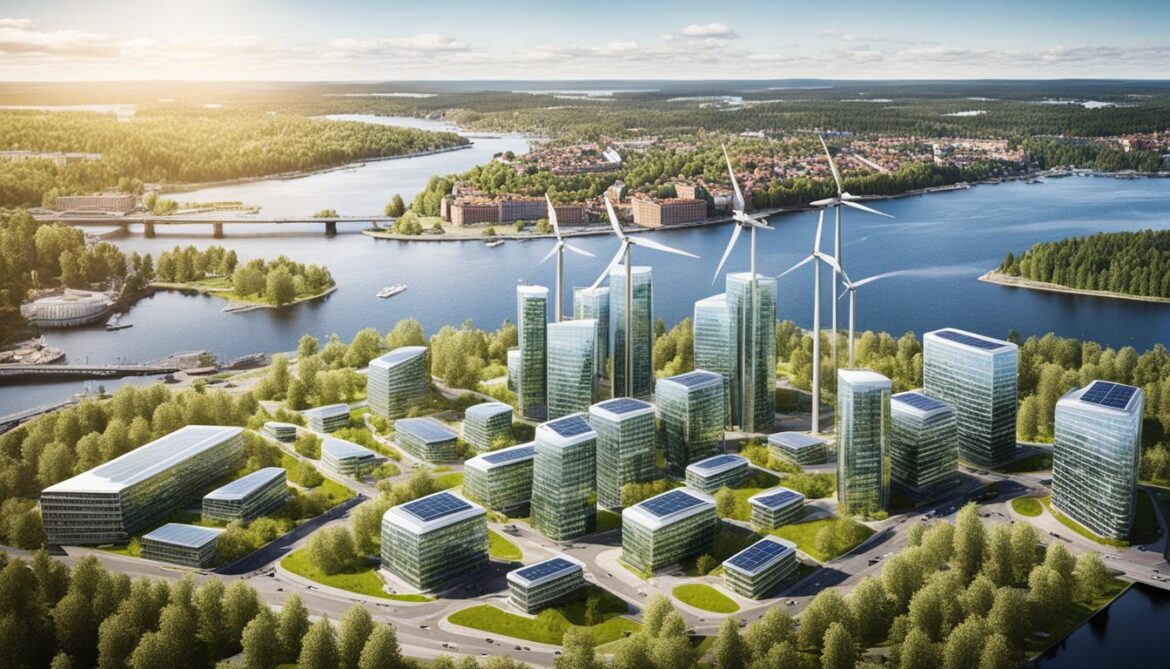
Gothenburg’s Sustainable Growth Challenges
As Gothenburg experiences large-scale developments and a growing population, the city faces the challenge of balancing economic expansion with environmental considerations. Ensuring sustainable development is crucial to minimize negative environmental impacts and create a harmonious living environment for residents.
The Gothenburg development strategy recognises these challenges and takes proactive measures to address them. Prioritizing infill development allows for the efficient use of existing land and resources, reducing the need for further urban sprawl. By focusing on maintaining the local character and identity of the city, Gothenburg can preserve its cultural heritage while accommodating growth.
To achieve sustainable growth, Gothenburg integrates sustainable building practices into its development projects. The city emphasizes the use of green building materials, energy-efficient technologies, and environmentally friendly designs to minimize energy consumption and carbon emissions. By incorporating these practices, Gothenburg aims to create a sustainable and eco-friendly urban landscape.
Gothenburg’s commitment to sustainable growth and environmental responsibility sets an exemplary standard for cities around the world. By addressing the challenges of sustainable development head-on and implementing innovative solutions, Gothenburg is paving the way for a greener future.
Sweden’s Leadership in Green Building
Sweden’s commitment to sustainable architecture and eco-conscious design has established the country as a global leader in green building. Through a focus on energy-efficient construction, green building materials, and environmentally friendly practices, Sweden has set an example for other nations to follow.
The country’s dedication to sustainable development is evident in its high number of LEED-certified projects. Sweden has embraced the LEED rating system, which recognizes buildings that meet strict criteria for energy efficiency, water conservation, indoor air quality, and sustainable materials. With 152 LEED-certified projects in 2022, Sweden ranks fifth in the world, making it a frontrunner in sustainable architecture.
Sweden’s innovative approach to sustainable architecture is showcased in its green building designs. The country has embraced cutting-edge construction techniques and materials that minimize environmental impact while maximizing efficiency. From the use of timber in the construction of the Sara Cultural Centre to the incorporation of recycled aluminum in the CityGate tower, Sweden’s green building examples highlight the integration of sustainable practices in architectural design.
“Sweden’s leadership in green building is not only beneficial for the environment, but it also promotes a healthier and more sustainable future for its residents. By prioritizing energy-efficient construction and eco-conscious design, Sweden sets an example for the global community.”
Sweden’s sustainable building practices extend beyond individual projects. The country’s holistic approach to development considers the larger urban environment and seeks to balance economic growth with environmental responsibility. By investing in infrastructure and utilizing green building materials, Sweden aims to create livable, eco-friendly cities that prioritize the well-being of both people and the planet.
In conclusion, Sweden’s leadership in green building is driven by its commitment to sustainability, the implementation of energy-efficient construction methods, and the integration of eco-conscious design principles. As Sweden continues to inspire other nations, its innovative approach to green building will play a vital role in shaping a more sustainable future.
Conclusion
Sweden’s commitment to sustainable architecture and eco-conscious design is evident in its top green buildings. Through LEED certification, innovative construction methods, and a holistic approach to development, Sweden has emerged as a global leader in green building. The success of projects like the Sara Cultural Centre and the CityGate tower in Gothenburg highlights Sweden’s ability to balance economic growth with environmental responsibility.
With a focus on green building materials and energy-efficient construction, Sweden’s green buildings serve as models for a more environmentally friendly future. These buildings showcase the country’s dedication to sustainability and provide inspiration for other nations to follow suit. By prioritizing eco-friendly practices and embracing sustainable architecture, Sweden is paving the way for a greener and healthier planet.
As sustainable development continues to be a priority, Sweden’s top green buildings will play a crucial role in shaping the future of eco-conscious architecture. These buildings demonstrate that economic growth and environmental responsibility can coexist, setting an example for sustainable development worldwide. Sweden’s leadership in the green building sector is a testament to its unwavering commitment to creating a more sustainable and greener future for all.




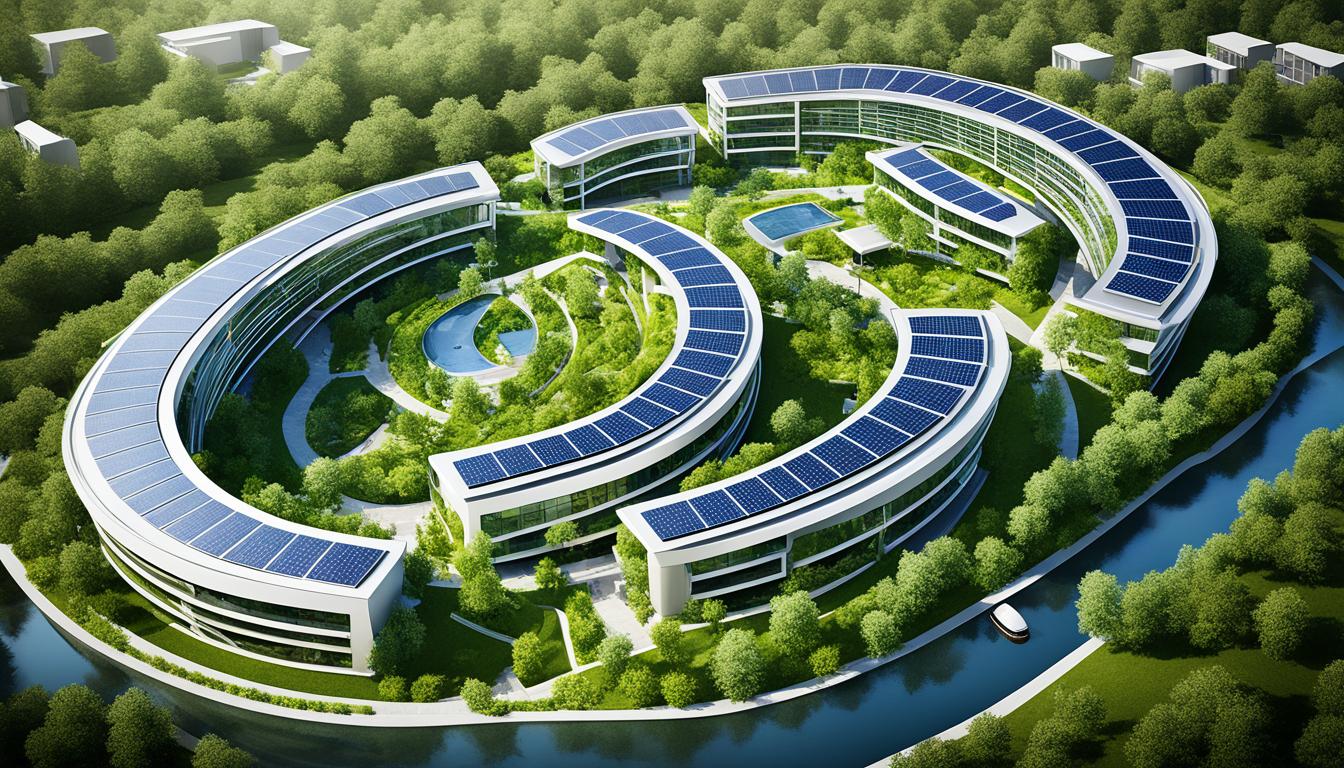

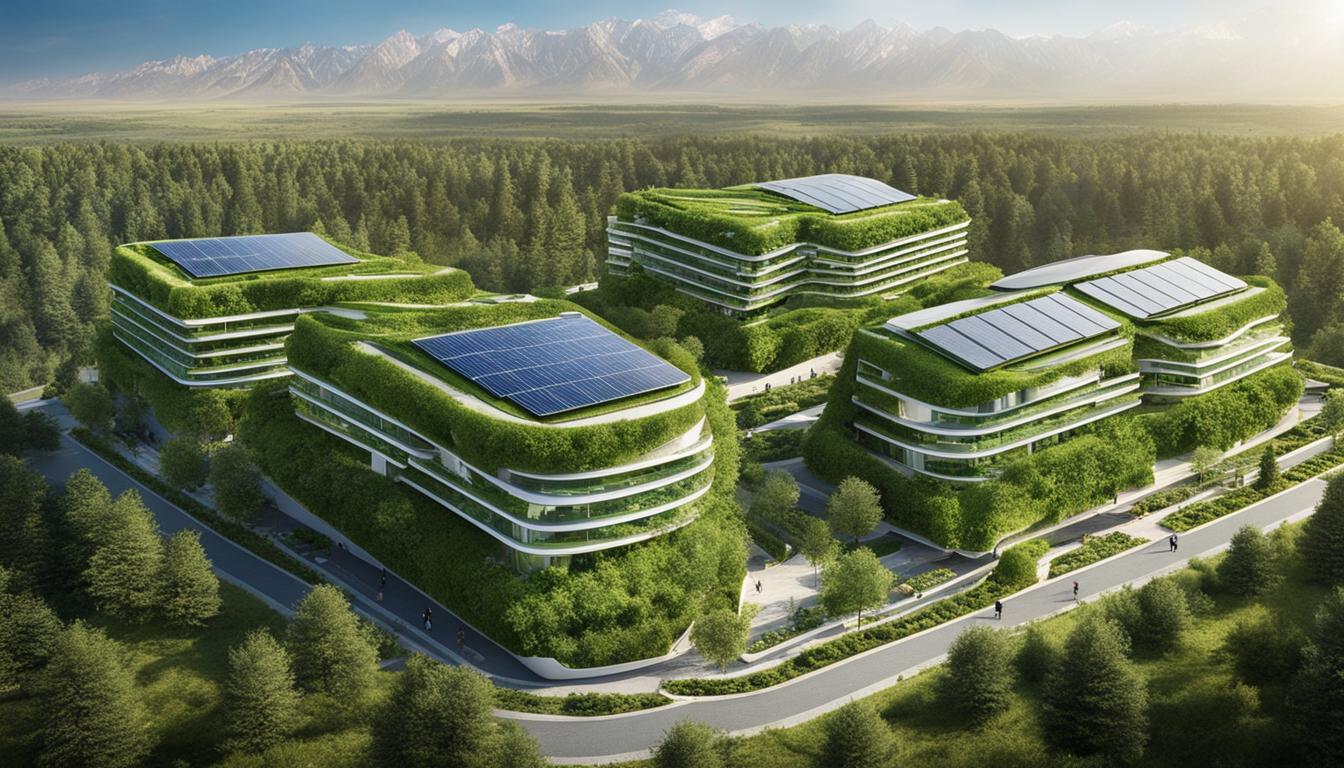
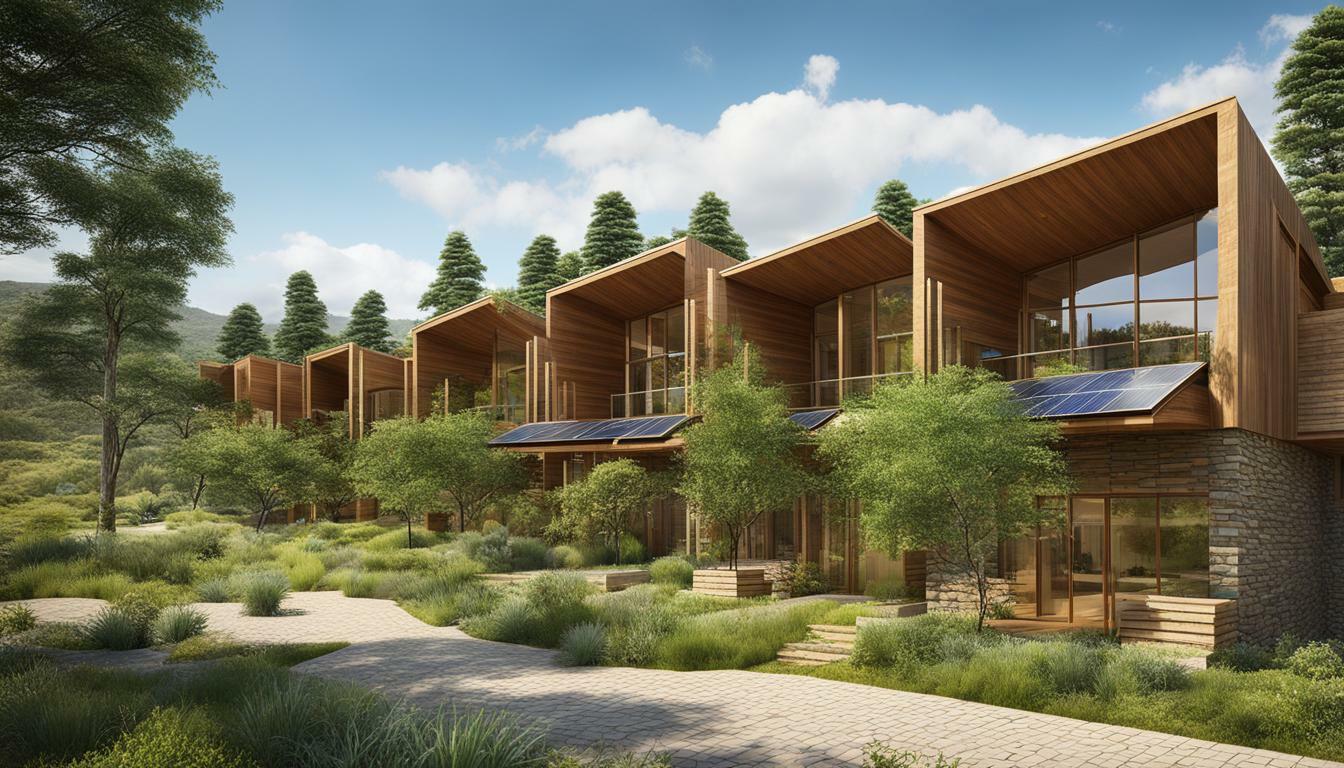

how can biophilic design boost sustainability? 3 examples of biophilic design in Sweden - mellow designs
1 year ago[…] https://constructive-voices.com/sweden-top-green-buildings/ […]